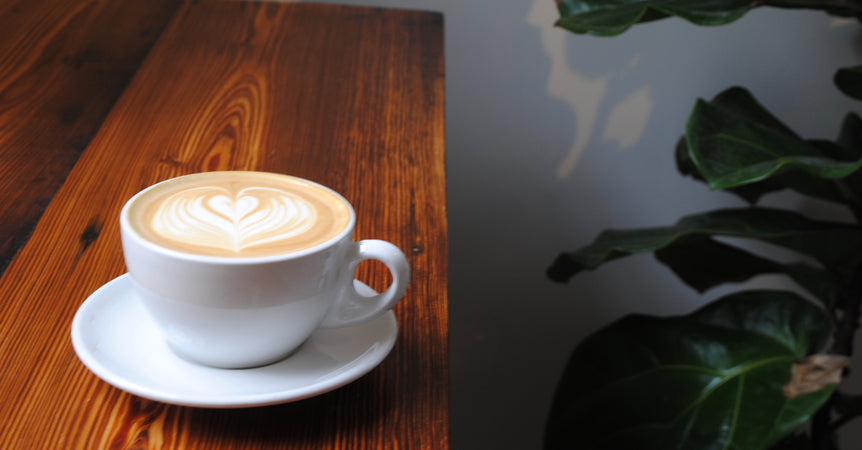The Future of Coffee!

What is the future of coffee? To understand that we must, first, take a look at the past and the present evolution of our beloved bean.
On March 31st this year we did just that. Explored (AND TASTED!) the changes of our industry over the past, present, and future. We hosted an incredible learning experience with Unblended Coffee where Lucas Cuadros and Barry Burgess walked our attendees through decades of trends and changes that influenced production, sourcing, demand, perception, and purchases. We want to share some of that with you!
YESTERDAY...
Up until 1974, most coffees were homogenous. Coffees were imported by the container (AHEM...21 tons of coffee) by large companies. The blanket flavor of a strong breakfast blend was, in-large, the quintessential perception of coffee. Coffees were mostly washed process. Unblended told us:
"If your crop [farmer's crop of coffee] made up a fraction of the entire container you were lost in a sea of anonymity."
In 1963, Folgers was taking America by storm and in 1972 the Mr. Coffee automatic coffee maker had just been introduced to the world. When you think about the way we consumer coffee now, it is pretty young. When I was a kid, there definitely wasn't a fancy specialty coffee shop around the corner. However, specialty coffee had already begun its journey. Enter Erna Knutsen.
She has won, not one, but two lifetime achievement awards from the SCA (Specialty Coffee Association) - an organization for which she set the pathway, as the industry's unofficial spokesperson of the late 60s - early 70s. Resources say she coined the term "specialty coffee," referencing the best flavor beans hailing from micro-climates. This was the beginning of present day coffee. She knew the value that was connection at origin, getting small roasters bags of lots of coffee and not entire containers, and cupping coffee - tasting the coffee she sold.
Sprudge writer Mike Ferguson describes the past well:
"They were known as the “small trade” back then, in the late 60’s, townie and regional roasters who couldn’t buy a container or half a box of coffee at one time, even for a component in their bestselling blend. As far as the coffee traders of the day were concerned, these roasters were anomalies and throwbacks, odd-ducks in a world full of fat geese roasters that ate containers of coffee for breakfast. Shipping anything in containers was only a decade old at that point, but the steel box had quickly become a metric in coffee since the coffee world was dominated by a handful of large roasters—four of whom owned 70% of the market—who thought of margins in fractions of a cent and sometimes in fractions of lost cents. Erna's thinking was different."
This thinking allowed us to look at a single region and single it out, it allowed us to differentiate flavor profiles, and it allowed us to bring back the story of origin.
TODAY...
Coffees are purchased through connection - sometimes through years of relationships with a particular producer or importer. Coffees are purchased because of differentiation. No longer do we look for blanket flavors and only blended beans. Incentives are given to producers for coffees of high quality, tedious care in production, and unique flavor profiles. Consumers now have preferences of origin and preferences of processing style. They might recognize coffees that are Washed, Double Washed, Natural, or Semi-washed. The industry pays more for coffee, adding value to the supply chain. Consumers pay more for coffee.
Although specialty coffee has a long road ahead as a sustainable industry, we have built strong coffee communities. We have seen coffee careers pop up in all sorts of fields. We have really niche national and global competitions testing the skills of baristas, barkeeps, tasters, and roasters. We have more transparency and communication along the supply chain than ever. We have education at our fingertips.
TOMORROW...
The future is today and experimental coffees are already on the horizon. It means more education for the consumer. It means choosing flavor and building coffees around it. It means a lot of work on the producer side.
The future of coffee might be working alongside microbiology experts, it might be borrowing techniques from the wine and beer industry, and it might be the implementation of advancements in technology. While this is unbelievably inaccessible to many producers, it is something happening in our industry. Producers like Felipe Trujillo, who produced our carbonic macerated "orange-washed" La Ventolera offering, are actively teaching future generations processing techniques that create non-traditional coffee flavors and boost their overall coffee scores (and, usually, their profits).
These productions might be multi-stage processes to isolate and control the different phases of coffee fermentation. They might involve painstaking cherry selection and cleaning, fermentation in low-oxygen environments, selected yeast and bacteria culture creations, isolated and inoculated cherry juices, marriages of components, and varying temperature changes. They might involve mint and lime juice infused fermentation tanks or Baja Blast rehydrated coffees (yes, BAJA BLAST, it exists).
There will surely be many pros and cons to these changes and, while the experimental coffees are crazy cool, we find value in the communities we build, in the resources we share, and in many styles of coffee. We will keep serving up traditional and approachable classics in addition to more modern takes on coffee.
As always, thanks for sipping with us.



